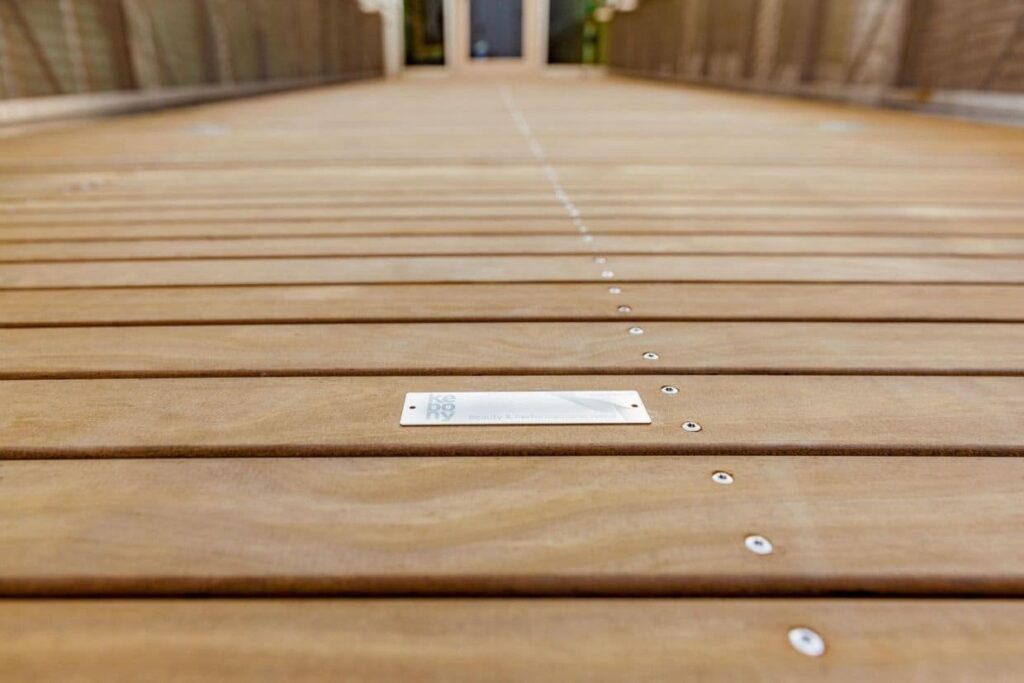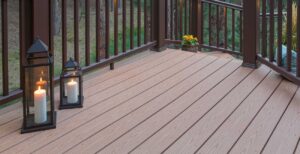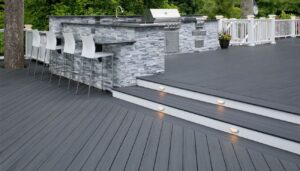Once you decide to add a deck onto your home, refer to this wood decking reviews that offers you the detailed information you may need for your next projects.
Thus, you will not be overwhelmed by the large number of building materials available on the market you visit.
Truly, there are a bundled of options ranging from PVC decking to aluminum and composite boards that are made from recyclable materials. However, none of them will be so charming and warm but the natural wood.
Wood decking have been widely used by millions of consumers across United States. In fact, wood is not the perfect materials for outdoor use.
Therefore, this article mainly comes with the pros and cons of the most famous wood types used for decking.
What do you actually expect from wood decking? Let’s just find the answer now!
Wood Decking Pros and Cons
Let’s take a few minutes to deeply recognize the pros and cons of wooden decking entirely before we go further to the domestic and exotic hardwoods.
This way, there are both advantages and disadvantages to use the wooden deck while there are also some factors that the homeowners must be aware of.
Pros of Wooden Decking
Though there have been manufacturers that produce synthetic decking to mimic the wood look, natural wood stand out to be the selected options for outdoors instead of using the plastic nature.
In the cooler months, wooden deck may feel too cold underfoot, however, it remains cooler in the summer.
Compared to PVC or composite decking, wooden deck boards are much more affordable.
Some wood species like Redwood, Teak and IPE are probably pricey but the pressure-treated pine along with the domestic wood species are the most reasonable in price. Moreover, there are unlimited number of design and styles offered by the wooden deck.
If you prefer Natural wood, there are hundreds of hues to select to paint, stain and sealed the wood boards. Coating them is also possible using the rubberized plastic to provide waterproof feature. Well, this aimed to add the boards with the additional protection.
Compared to composite decking that can be easily stained or painted, it would not be easy with the wooden deck since you can only change its color when it’s time for heavy maintenance. This will require you to wait until the decks are discoloring after a few years.
One more pro of wooden deck is the use of the environmentally-friendly building materials. Actually, trees are the renewable materials and wood is recyclable, too.
Thus, if you want to make sure that your decking comes with the environmental-concern, source your lumber from a manufacturer that uses a responsible harvesting practices.
Read Also: Tongue and Groove Decking Reviews for More Interesting Boards
Cons of Wooden Decking
Later on this wood decking reviews, the cons involve maintenance you should carry out. In this regards, there are variety of stains and sealants to protect your wooden boards from the sun and other components with UV inhibitors other chemicals.
No problem how expensive the price will be, you’ll need them for resealing and staining every 2 or 3 years depending on the environment conditions.
Further, wooden decking will not as durable as aluminum decking expect that you choose the exotic wood species.
From times to times, the wood can splinter, crack, warp and fade because of the water and weather. You will not find these issue on synthetic materials.
The Best Type of Wood for Outdoor Decks
In this part of our review, we are going to present the best type of wood for outdoor decks. This way, we have selected the best two wood types that will technically work with the deck along with the proper treatment. These two species are Redwood and Cumaru.
So let’s check out the detail of each wood types below:
Redwood
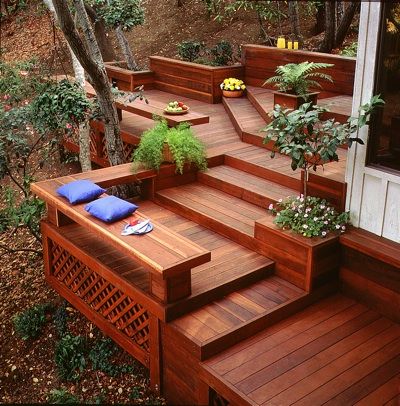
There are a wide range of Redwoon deck boards, from pinkish to reddish-brown in color. For outdoors, these colors are considered as the most interesting options if they are covered with a clear sealant.
This way, Redwood has excellent dimensional stability and hails derived from the largest trees on earth. These trees can have 400 feet heights.
Redwood is just a domestic species that can be relatively easy to obtain. United States has certain parts of areas growing these trees.
As a decking materials, Redwood is lightweight and easy to work with though it is not as hard as the most exotic species. In this case, Cedar is the domestic wood compared to Redwood.
Cumaru
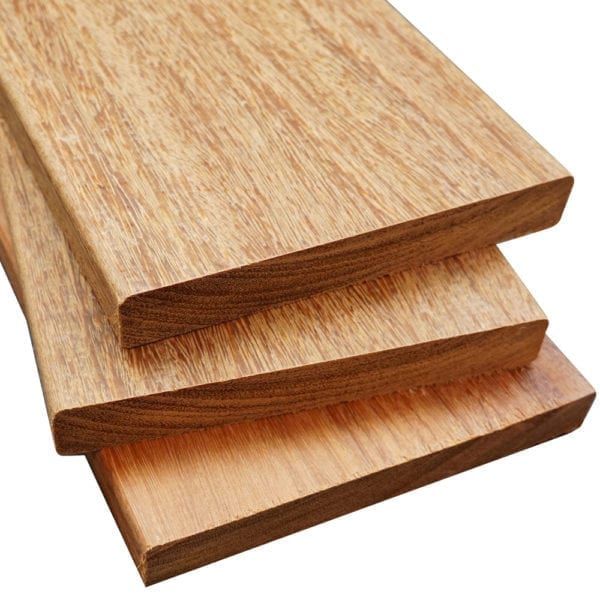
Based on our wood decking reviews, Cumaru is a wood species that is native to South America. Cumaru is also popularly known as Brazilian Teak which has the highest rank in the Janka scale. The natural form of Cumaru is gold and red hues running from the reddish-brown to golden.
Typically, Cumaru is sometimes sold as “Teak” by the decj dealers.
IPE is the wood type compared to Cumaru. This way, IPE is just another wood type obtained from South America, similar to Cumaru.
IPE is also one of the exotic wood species that is also available in cheap options. It can also be an excellent choice for hardwood flooring.
Compared to IPE, Cumaru is more affordable. Further, it can also be easier to obtain domestically.
Tigerwood
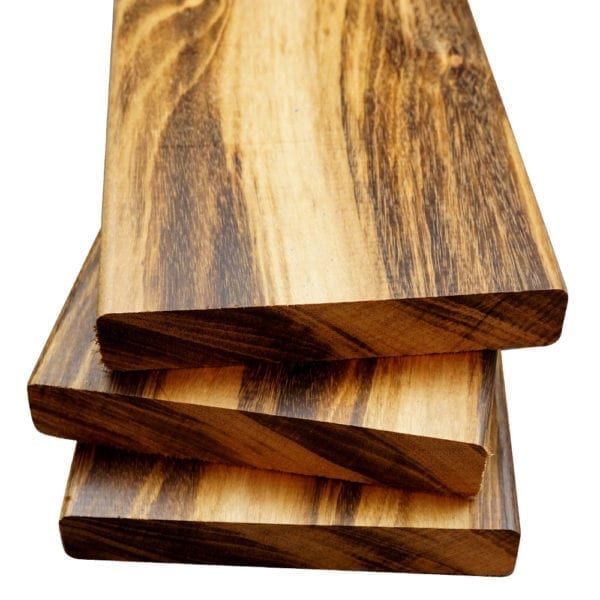
Choose no other but Tigerwood of you want a natural wood that stands out and looks exotic. It comes with the stable durability.
Tigerwood is popular for its streaked looks which are suitable for outdoor spaces. The weather will not fade it out by the UV rays. This is because Tigerwood is grouped into tropical woods.
There are two regions that grows Tigerwood. The variant which is knows as African Walnut is derived from Africa while Goncalo Alves are grown in Brazil, making the wood called as Brazilian Koa.
This way, Tigerwood is not available in dealers, causing the price higher and the availability is questionable.
Mahogany

One more types of wood that is usually used for this wood decking reviews is Mahogany. Mahogany wood is derived from Swietenia genus of tress. They are found in many tropical regions around the world.
There are more than 600 species of mahogany families. This way, some types of Mahogany are used for the hardwood flooring and decking company.
The high quality of Mahogany is easy to work and comes with the excellent dimensional stability. In detail, Santos Mahogany, Mountain Mahogany and Luan Mahogany are Mahogany’s variants that are widely used for decking and flooring. However, they are not the real Mahogany as you may think of.
The real Mahogany is never be used for decking due to some certain reasons, one of which is the cost and the illegal export. When you find a deck from Mahogany, it is likely taken from the Shorea family or the same species.
Comparison of Wood Decking
In fact on this reviews, there are some other wood species that are also suitable for decking materials. This way, the woods are considerably more suitable for outdoor use than them.
In this comparison, we would like to compare one species to another in their key areas like durability, weather resistance, price and eco-friendliness.
Durability
Based on the Janka scale, Cumaru has a higher durability with the rating of about 3.500. This way, there are only three types of wood ahead of in Brazilian Walnut and Curupay.
In our list, Mahogany comes with the high durability in second rank after Cumaru. This way, mahogany has 2.500 to 2.200 rating on Janka scale. However, it still much depends on the materials.
Tigerwood and Brazilian Koa has a bit lower rating on Janka Scale which is 2.160 while Hickory is 1.820 as similar as Redwood. Redwood and cedar are ranked lower below the common species such as Oak, Maple, Chery and Walnut.
Weather Resistance
When it comes to weather resistance, Cumaru is more resistant to weather since it is supported with the high durability and density of the woods.
Termites and other wood-boring insects can be easily repelled though the wood may experience discoloration because of the sun light.
Redwood is resilient for outdoor due to its natural fire resistance. The wood is softer and stable so that it will not easily crack, warp or splinter. It is also featuring insect resistance. However, it can turn to grey if not sealed or coated.
Tigerwood is another exotic species that is also great for outdoors. Though it is not as hard as Cumaru, it can repel termites and rot well. As you wish, Mahogany is also resistance to such elements due to its tropical nature.
Read Also: Armadillo Decking Reviews
The Green Factor
What’s more to include in this wood decking reviews? The green factor!
Wood and some exotic wood are eco-friendly for the building materials as long as they are sourced and harvested with the company’s responsibility. This way, some species can be greener than the others. Further, anything that is exotic may have some stipulations.
Dealing with the green factor, Cumaru as a safe wood, as safe as Tigerwood. Redwood is probably grown in the west coast of United States but it is considered vulnerable due to the deforestation in the past. However, it is still available today.
Luan Mahogany along with the other similar species are easy and legal to obtain while the authentic Cuban Mahogany is not because it has been banned from export since 1946.
So you will not find this wood type for your home unless it is on pre-existing deck which was close to 50 years old.
| Species | Size | Solid | Grooved |
| Tigerwood | 1” x 6” | $2.05 – $2.20 | $2.51- $2.70 |
| Cumaru | 1” x 6 | $2.15 – $2.30 | $2.70 – $2.85 |
| Redwood | 2” x 6” | $2.30 – $4.00 | – |
| Mahogany | 1” x 4” | $1.50 – $2.65 | – |
| Tigerwood | 5/4” x 6” | $2.51 – $2.70 | – |
| Cumaru | 5/4” x 6” | $2.80 – $2.97 | $3.00 – $3.25 |
| Mahogany | 5/4” x 6” | $2.75 – $3.99 | $3.20 – $3.50 |
Wood Decking Cost and Availability
Wood can be more affordable than PVC decking or composite deck boards. However, some exotic species are available in premium costs.
The availability of the wood decking is relatively depending on where you live and your budget for your decking project. The prices are various excluding the shipping charges.
Mahogany is the most difficult to find and it comes with the widest price range while redwood is just easy to find and surprisingly cheaper. Tigerwood is also available locally along with the reasonable price list.
What are the cheapest wood?
Cumaru, this way, is the cheapest and easiest wood for your wood decking. It is available locally. Further, there are more reputable companies producing and selling this wood online.
Though it is still more expensive than the pressure-treated decking, it can ve the best option for all around.
Frequently Asked Questions
What types of wood is considered the best option based on the review?
Cumaru.
Why is mahogany hard to find?
It was already banned from exporting.
Can I have a gold wood decking? What types of wood should I choose?
Cumaru is gold and red hues running from the reddish-brown to golden.
